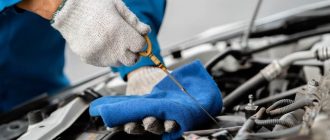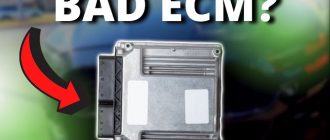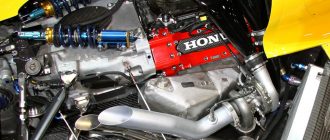When Car Engine Doesn’t Start
Possible Causes and Solutions
There are several reasons why a car engine might not start. Some of the most common causes include:
- Dead battery. This is the most common cause of a car not starting. If the battery is dead, it will not be able to provide the power needed to start the engine. To test if the battery is dead, you can use a voltmeter to check the voltage. If the voltage is below 12 volts, the battery is likely dead and will need to be replaced.
- Bad starter. The starter is responsible for turning the engine over. If the starter is bad, it will not be able to engage the flywheel and start the engine. To test if the starter is bad, you can use a multimeter to check the voltage at the starter solenoid. If the voltage is below 12 volts, the starter is likely bad and will need to be replaced.
- Faulty ignition switch. The ignition switch is responsible for sending the power from the battery to the starter. If the ignition switch is faulty, it will not be able to send the power to the starter and the engine will not start. To test if the ignition switch is faulty, you can use a multimeter to check the voltage at the ignition switch. If the voltage is below 12 volts, the ignition switch is likely faulty and will need to be replaced.
- Fuel problems. If the engine is not getting fuel, it will not be able to start. There are several reasons why the engine might not be getting fuel, such as a clogged fuel filter, a bad fuel pump, or a faulty fuel injector. To troubleshoot fuel problems, you can start by checking the fuel filter. If the fuel filter is clogged, it will need to be replaced. If the fuel filter is not clogged, you can check the fuel pump. To check the fuel pump, you can use a fuel pressure gauge to measure the fuel pressure. If the fuel pressure is below the manufacturer’s specifications, the fuel pump is likely bad and will need to be replaced. If the fuel pressure is within the manufacturer’s specifications, you can check the fuel injectors. To check the fuel injectors, you can use a fuel injector tester to see if they are spraying fuel.
- Electrical problems. If the engine is not getting the electrical power it needs, it will not be able to start. There are several reasons why the engine might not be getting the electrical power it needs, such as a bad alternator, a loose battery connection, or a faulty wiring harness. To troubleshoot electrical problems, you can start by checking the alternator. To check the alternator, you can use a voltmeter to measure the voltage at the battery terminals. If the voltage is below 14 volts, the alternator is likely bad and will need to be replaced. If the voltage is above 14 volts, you can check the battery connections. To check the battery connections, you can remove the battery terminals and clean them with a wire brush. If the battery connections are clean, you can check the wiring harness. To check the wiring harness, you can look for any loose or damaged wires.
Troubleshooting Tips
If your car engine doesn’t start, there are a few things you can do to troubleshoot the problem:
- Check the battery. The first thing you should do is check the battery. If the battery is dead, it will not be able to provide the power needed to start the engine. To test the battery, you can use a voltmeter to check the voltage. If the voltage is below 12 volts, the battery is likely dead and will need to be replaced.
- Check the starter. If the battery is good, the next thing you should check is the starter. The starter is responsible for turning the engine over. If the starter is bad, it will not be able to engage the flywheel and start the engine. To test the starter, you can use a multimeter to check the voltage at the starter solenoid. If the voltage is below 12 volts, the starter is likely bad and will need to be replaced.
- Check the ignition switch. If the battery and starter are both good, the next thing you should check is the ignition switch. The ignition switch is responsible for sending the power from the battery to the starter. If the ignition switch is faulty, it will not be able to send the power to the starter and the engine will not start. To test the ignition switch, you can use a multimeter to check the voltage at the ignition switch. If the voltage is below 12 volts, the ignition switch is likely faulty and will need to be replaced.
- Check the fuel system. If the battery, starter, and ignition switch are all good, the next thing you should check is the fuel system. The fuel system is responsible for delivering fuel to the engine. If the fuel system is not working properly, the engine will not be able to start. To troubleshoot the fuel system, you can start by checking the fuel filter. If the fuel filter is clogged, it will need to be replaced. If the fuel filter is not clogged, you can check the fuel pump. To check the fuel pump, you can use a fuel pressure gauge to measure the fuel pressure. If the fuel pressure is below the manufacturer’s specifications, the fuel pump is likely bad and will need to be replaced. If the fuel pressure is within the manufacturer’s specifications, you can check the fuel injectors. To check the fuel injectors, you can use a fuel injector tester to see if they are spraying fuel.
- Check the electrical system. If the battery, starter, ignition switch, and fuel system are all good, the next thing you should check is the electrical system. The electrical system is responsible for providing power to the engine and its components. If the electrical system is not working properly, the engine will not be able to start. To troubleshoot the electrical system, you can start by checking the alternator. To check the alternator, you can use a voltmeter to measure the voltage at the battery terminals. If the voltage is below 14 volts, the alternator is likely bad and will need to be replaced. If the voltage is above 14 volts, you can check the battery connections. To check the battery connections, you can remove the battery terminals and clean them with a wire brush. If the battery connections are clean, you can check the wiring harness. To check the wiring harness, you can look for any loose or damaged wires.
Conclusion
If you have tried all of the troubleshooting tips and your car engine still doesn’t start, you may need to take it to a mechanic. A mechanic can diagnose the problem and repair it so that your car can start again.




